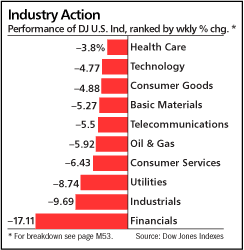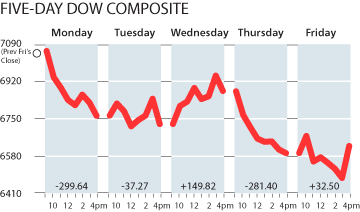GM to raise cash, cut jobs
Broad restructuring aims to realign its operations to changing market
David Shepardson and Christine Tierney / The Detroit News
General Motors Corp. Chairman and CEO Rick Wagoner will announce today another round of job cuts, cost reductions and other steps to raise cash as part of a sweeping restructuring plan to deal with plunging sales of trucks and SUVs that had been the automaker's chief source of profit.
Sources familiar with the plan say it entails thousands of white-collar job losses, a sharp reduction in spending, including cuts in executive compensation, and a broad realignment of the automaker's North American truck capacity to build more cars and fewer light trucks.
GM's board of directors met Monday to approve the plan, which executives took weeks to prepare. The directors also reaffirmed support for the management team led by Wagoner and its newest turnaround plan.
"It will be a clear message on the ways we will restore our health, our measures to realign capacity," said a person familiar with the plan. "It's tough medicine, but it's real."
GM officials publicly declined to comment, but the firm confirmed Monday that Wagoner would speak with employees this morning and hold a news conference afterward "to discuss actions the company is taking to align the business to current market conditions."
The plan seeks to address concerns that have sent GM's stock to historic lows, such as the rate at which the company is burning through cash and concerns that its production plans are not adapted to the swift and radical changes taking place in the U.S. auto market.
"The hysteria began to build over the last couple of weeks across the whole industry," said David Cole, chairman of the Center for Automotive Research in Ann Arbor.
GM's stock fell 5.4 percent Monday to finish at $9.38 a share, its lowest close in more than 50 years. The automaker's sales have fallen 16.3 percent in the first half of the year, more than the auto market as a whole, and analysts say the automaker could face a liquidity crunch as early as next year.
Analysts have suggested that GM might borrow by pledging profitable assets, such as its OnStar or overseas operations, and conserve cash by suspending or lowering dividend payments.
They estimate that GM is burning cash at a rate of between $1 billion and $1.5 billion a month. The company said in April that it had $24 billion in cash on hand and a $7 billion line of credit at the end of the first quarter.
"Given the rate of cash burn they have, they should be raising cash," said Joe Phillippi, president of AutoTrends Consulting Inc. in Short Hills, N.J.
GM's new plan assumes its U.S. market share will decline this year in a contracting market hit by falling home values, a sagging economy and tightening credit. In the first half of the year, GM's market share declined to 21.4 percent from 23 percent in the prior year.
Officials declined to say whether the company would cancel its $1 a share dividend, a measure that would save the company about $565 million annually.
Wagoner sought Thursday to quash speculation that GM was considering bankruptcy. Speaking to reporters after giving a speech in Dallas, Wagoner said the automaker has "no thoughts whatsoever" of bankruptcy. Today's actions will mark GM's third announcement of major restructuring moves in recent weeks.
In early June, as industry sales tumbled far below GM's initial expectations, the automaker said it would close four truck plants in North America by 2010, a move expected to save around $1 billion a year. The plants are in Mexico, Canada, Janesville, Wis., and Moraine, Ohio, and GM has said factories supplying those plants are likely to be affected as well.
GM also retained advisers to help sell its Hummer brand -- a line launched when big trucks were very popular and gas prices relatively low.
Later last month, GM said it would cut 170,000 trucks from its production plan later this year and add 47,000 cars and crossovers to better meet changing consumer demand.
This year, as gas rose above $4 a gallon, consumers switched to cars faster than automakers anticipated. Light truck sales account for 44 percent of the market now, down from 55 percent six months ago.
GM's new plan appears to target its salaried work force, which has declined by 12,000 to around 32,000 employees since 2000, when Wagoner became CEO. GM isn't expected to announce a specific number of job cuts but rather a percentage of cuts in salaried costs.
Hourly workers might be affected, however, by the realignment of production capacity under way. Cole, whose father Edward Cole was a president of GM, said the United Auto Workers was unlikely to put up strong resistance. "One of the things the UAW cannot afford is a failure in the industry -- maybe a Chrysler, but not a GM or Ford," he said.
GM as well as Toyota started out the year predicting flat sales. But most industry forecasters expect the market to fall to its lowest level in more than a decade, with sales below 15 million cars and trucks.
Merrill Lynch estimated that sales were likely to fall further next year, to 14 million units. One reason it is urgent for GM to raise cash now, Phillippi said, is that "we don't know where the bottom is on the economic cycle."
Subscribe to:
Post Comments (Atom)



No comments:
Post a Comment